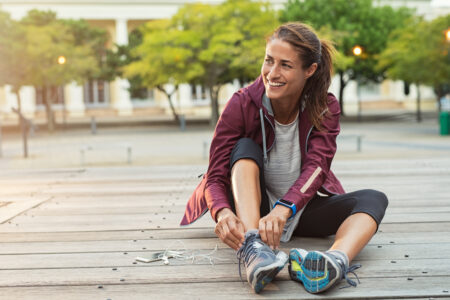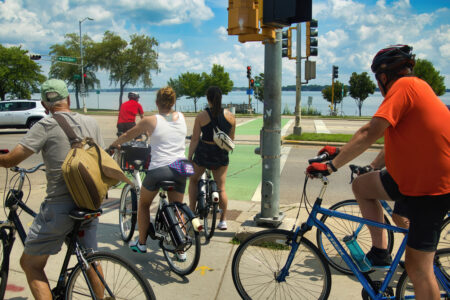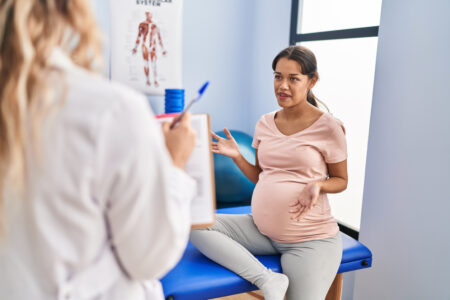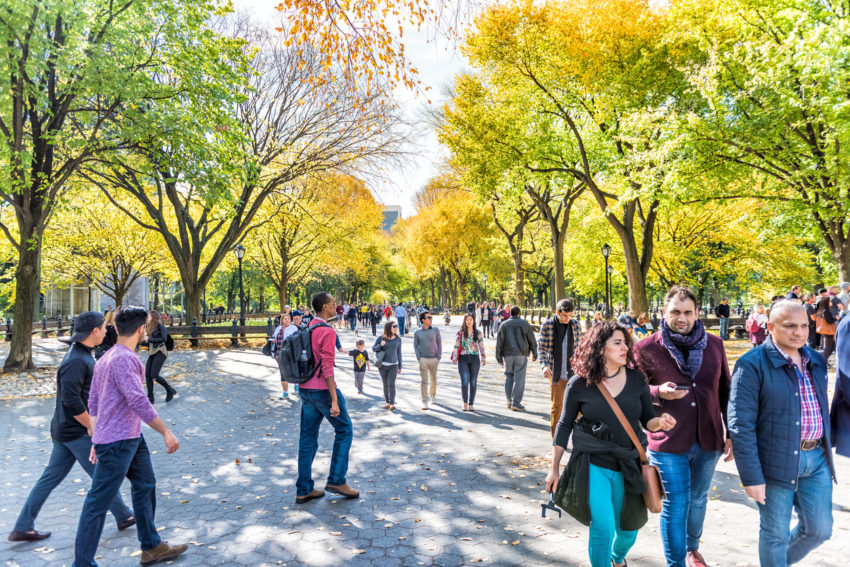
Share On Social!
With schools and retail stores closed to prevent the spread of COVID-19, more people are going outside to walk and bike in communities across the country.
Philadelphia and New York are closing some streets to cars and open them to people walking and biking. This gives people room to practice six-foot social distancing rules as they pick up groceries, get physical activity, and grab some fresh air amid the coronavirus lockdown.
But some cities and states are closing parks amid virus fears. This worsens existing inequities in access to green and open spaces for Latinos and other disadvantaged communities.
Equitable access to green and open spaces is more important than ever.
Outdoor Recreation is Surging during Coronavirus
Social media is abuzz about the spike in people outside walking in neighborhoods, parks, and on trails.
“So far, Trump’s social distancing appears to have more people outside than Michelle Obama’s Let’s Move Campaign,” according to one tweet on Twitter.
Data confirm this surge.
Biking is up 52% over bridges in New York City (29.1% Latino). That’s partially why city leaders are closing streets to cars and opening them to people.
Biking is up an average of 151% on trails in Philadelphia (14.5% Latino). On one trail, biking is up 471%. That’s why the Bicycle Coalition of the Greater Philadelphia Area started a petition to city council asking them to ban cars on popular corridors to give people more space to walk and bike.
Park attendance is up 30% to 50% in the most popular state parks in Maine (1.7% Latino), although many have closed visitor centers, camping, and restroom facilities.
Nationwide, trail usage is up 200% compared to last year, according to the Rails to Trails Conservancy.
Car traffic is down, too. This reduces air pollution, improves air quality, and saves lives, experts say.
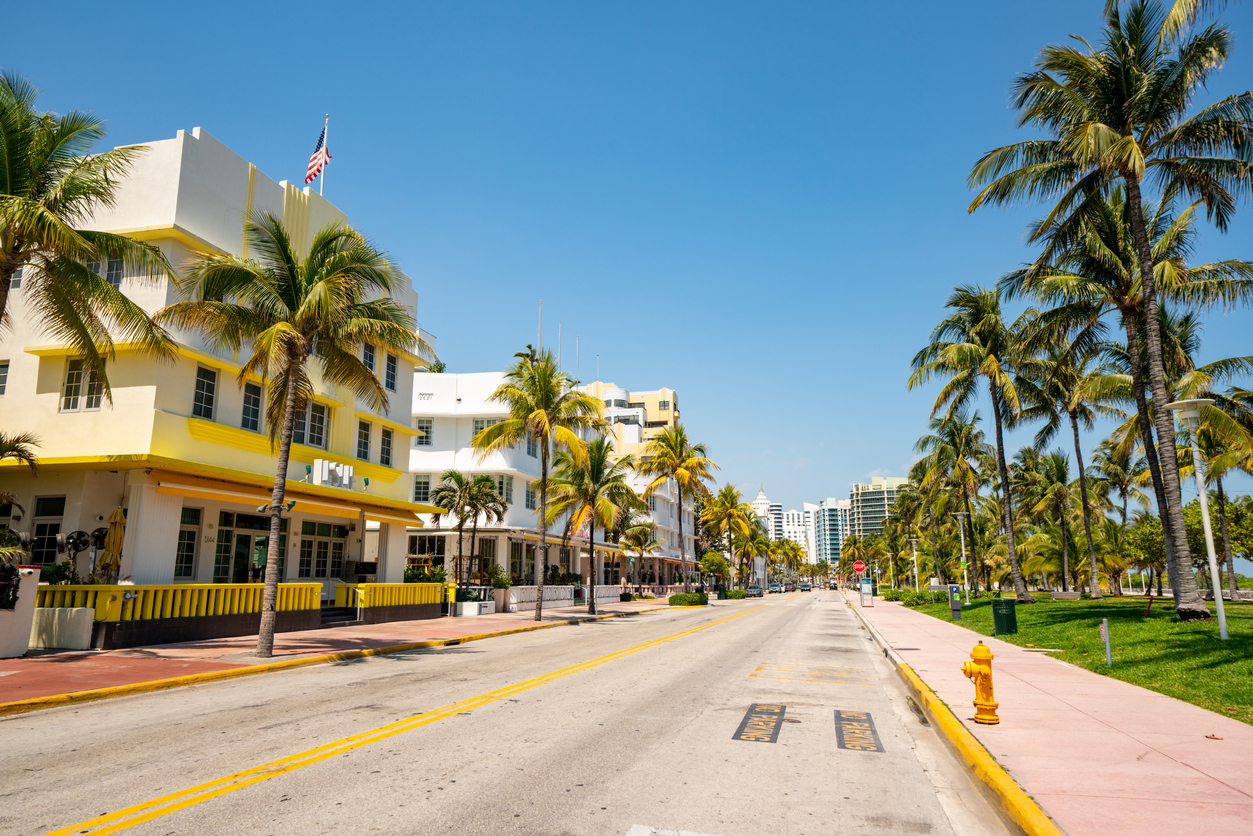
Keeping parks open and designating car-free streets can help give people the space they need to practice social distancing and stay healthy while preventing coronavirus spread.
UPDATE (April 9, 2020): How to Open Streets Right During Social Distancing from Streetsblog USA
UPDATE (April 12, 2020): Sign the Rails to Trails Conservancy petition to ask local elected officials to close select streets to car traffic to create safe places to walk and bike during this global pandemic.
Inequities in Open Spaces, like Sidewalks, Can Hinder Social Distancing during Coronavirus
To prevent person-to-person spread of COVID-19, public health professionals recommend staying home if you are sick and avoiding close contact with people who are sick.
If not sick, public health professionals recommend physical separation through:
- Avoiding public places, like restaurants, bars, and gyms;
- Limiting gatherings to fewer than 10 people; and
- Maintaining six feet distance between other people.
Many interpret this to mean parks and trails are safe if people practice six-feet social distancing.
In fact, many recommend getting outdoors to walk to practice self-care and cope with the current crisis. Getting physical activity is critical for physical and mental health as well as for children’s academic performance and brain development.
However, as more people visit parks and trails, gets harder to navigate the six-feet rule.
Moreover, most sidewalks are just five feet and most bike lanes are just four.
“That’s nowhere near enough space to maintain a CDC-recommended six-foot distance from your neighbors if you run into even one person when you’re out and about — much less a crowd,” according to Kea Wilson with Streetsblog USA.
Additionally, many neighborhoods don’t have sidewalks.
For example, sidewalks are only present in 49% of low-income neighborhoods compared to 89% high-income neighborhoods, according to a Safe Routes National Partnership report. Latino communities often equitable access to sidewalks and green space, according to a Salud America! research review.
Maintaining six feet between people while outside is also a problem in cities with few parks, or parks with inequitable access.
Recommendation to Stay Close to Home Shines a Light on Disparities in Access to Parks
California state parks advise: “For those wishing to take a break in the outdoors, public health officials are advising them to walk, run, hike and bike in their local neighborhoods and walk to parks.”
But what if you have no local places to walk, and no parks to go to?
Nationwide, roughly 15% of city land is used for parks and recreation, and roughly 54% of residents live within a 10-minute walk of a park.
But it’s lower in many cities and many groups.
In San Antonio (64.2% Latino), for example, only 10% of city land is for parks and only 42% of residents are within a 10-minute walk of a park.
Only 1 in 3 Latinos live within walking distance (<1 mile) of a park.
“The COVID-19 pandemic is making a lot of us realize how important our neighborhoods are when we can’t really leave them,” Wilson said.
Many cities also are asking people not to congregate outdoors amid the coronavirus.
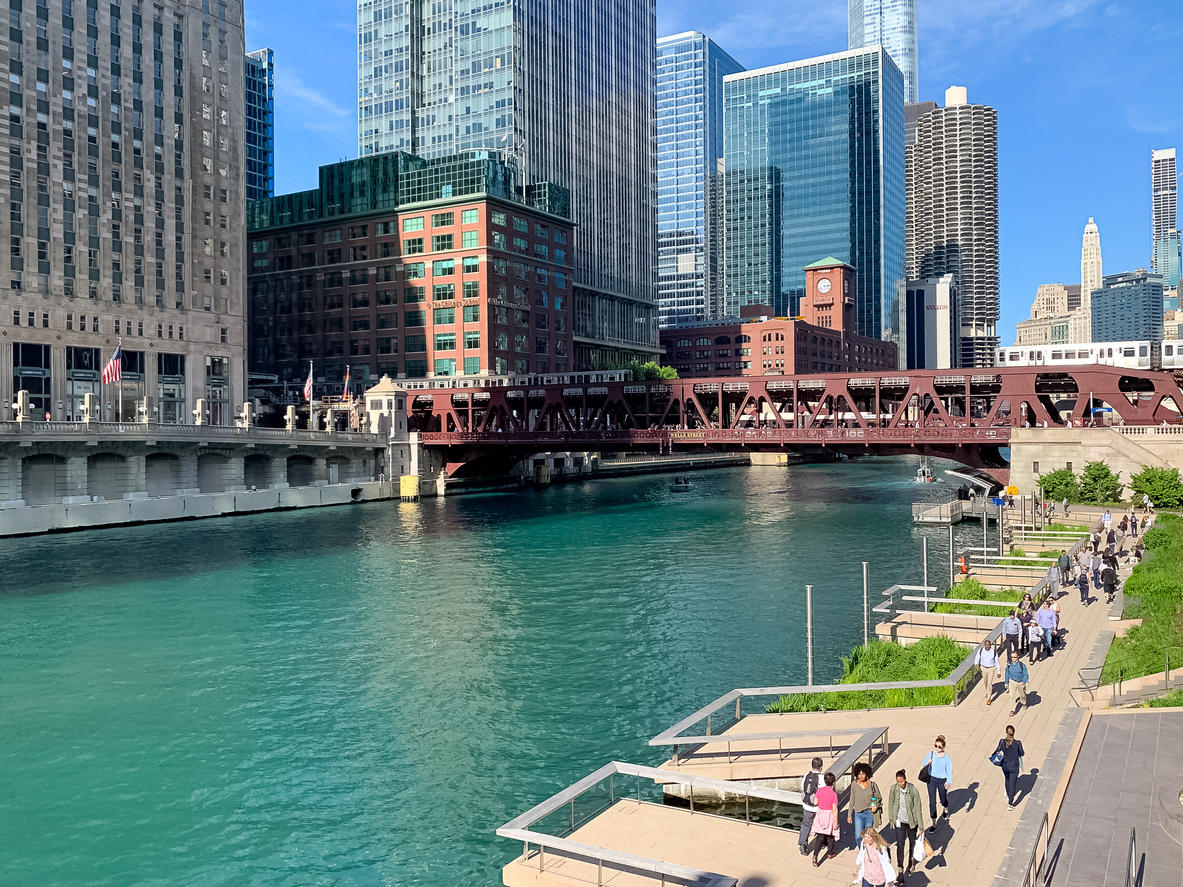 This means cities should remain sensitive to how households of all race/ethnicities, ages, and sizes navigate public space.
This means cities should remain sensitive to how households of all race/ethnicities, ages, and sizes navigate public space.
About 20% of Americans live in a multigenerational home, according to the Pew Research Center. Among Latinos, 27% live in a multigenerational home.
Nationwide, 1.4% of people live in households are seven or more people. It’s higher in places like Texas (1.9%) and California (2.5%). The theme of family and social connectedness is especially prominent in Latino neighborhoods.
To ensure households of all ages and sizes are able to practice social distancing while more people are out and about, cities should come up with ways to provide more open space during this public health crisis.
“Closing trails during pandemic, without opening streets, is misguided and inequitable,” according to John Greenfield with Streetsblog Chicago.
Reducing Open Space Could Make the Problem Worse
Some say keeping parks open is reckless.
Others say parks are a safe bet.
Either way, closing some parks could limit open space and increase attendance at other parks, making it even harder to practice six-foot social distancing.
Overcrowding in public spaces is a serious issue, but limiting public open spaces is likely not the answer.
National parks, for example, are often destination parks, drawing people from across the county, which is concerning given how quickly some cities can become hot spots.
That’s why the Nation Park Service has closed six major parks, Yellowstone, Grant Teton, Great Smoky Mountains, Glacier, Arches, and Canyonland. The communities surrounding these parks have few ventilators and intensive care rooms.
California is the first states to close all state parks to vehicle traffic.
Closing national and state parks is very different than closing local parks, particularly because, as mentioned previously, there are disparities in access to local parks and disparities in access to sidewalks.
“It’s becoming painstakingly clear that every American needs safe, immediate access to the outdoors—trails in every neighborhood, right now,” according to the Rails to Trails Conservancy.
“The closure of MLK Drive will provide additional space for these activities to be conducted safely,” according to a statement by the City of Philadelphia. “The City of Philadelphia strongly encourages residents to stay indoors as much as possible. However, we recognize that physical activity is important to well being, and under current restrictions, are providing opportunities for park and trail use. We encourage residents to please maintain social distancing in the course of outdoors recreation.”
What Can You Do To Promote Equitable Access to Open Spaces?
Push your local leaders to increase equitable access to open space.
Sign the Rails to Trails Conservancy petition to ask local elected officials to close select streets to car traffic to create safe places to walk and bike during this global pandemic!
Share the petition on Twitter or Facebook.
You can also download a Health Equity Report Card, by Salud America! at UT Health San Antonio, and see your local population density, respitory hazard index, tree canopy coverage, and other health equity issues in your community.
Enter your county name and see how your area compares to the rest of your state, nation.
Then you can email your Health Equity Report Card to elected officials, share it on social media, and use it to make the case to address food insecurity where help is needed most!
By The Numbers
27
percent
of Latinos rely on public transit (compared to 14% of whites).

